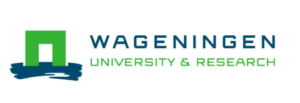WP2 – “Soil-water-plant interactions”
WP2: Linking climate, land use and local water management: interacting processes in the soil-water-plant atmosphere system
Leader: Dr. ir. Ruud Bartholomeus, Wageningen University
The effect of climatic forcings on water fluxes is most evident on the Earth’s surface where precipitation can take multiple pathways to the surface water system. By means of runoff, infiltration or via evaporation the water can continue its journey. Besides climatic conditions, anthropogenic land use, water use and water management affect water resources. Consequently, both climate change and anthropogenic activities ‘at the soil surface’ can provide offsetting and additive impacts on water resources, while water resources also determine the suitability of areas for e.g. agricultural land use (Hack-ten Broeke et al., 2016) and specific nature targets (Witte et al., 2015). The shallow subsurface – with its interacting processes in the soil-water-plant-atmosphere system – thus connects atmospheric conditions with plant functioning, land use and groundwater recharge (Jarvis et al., 2022). WP2 will enhance our process-based understanding of the interaction between climate change, water management and water use on groundwater recharge, nature and agriculture, by improving local scale modelling tools and policy supporting instruments, applied in the three cases.
The activities of this work package can be divided into four steps:
- Improved plot scale modeling of interacting processes in the soil-water-plant-atmosphere system, focusing on the transport of water and oxygen in relation to plant root development, and impact on plants’ drought stress and waterlogging stress;
- Quantify the effects of climate change and current water management practices on (within and between year dynamics in) site conditions for agricultural crops and natural vegetation, focusing on the effect of increasing hydrometeorological extremes (too wet and too dry) on plant development in critical phenological stages (emergence, root development, flowering);
- Quantify the benefits (reduced drought stress) and trade-offs (increased waterlogging) of water retention measures (adapt drainage to store water in periods of precipitation surplus and decrease drought vulnerability in the growing season);
- Incorporate process-based knowledge in instruments to support policy making (‘Waterwijzers’) and analyze critical limits of land use (vegetation types, agricultural crops) in relation to climate change and adaptive water management in three cases.
Involved consortium partners:
Dr.ir. Mirjam Hack-tenBroeke

Dr. Klaasjan Raat

Dr.ir. Niko Wanders

Dr. Perry de Louw


